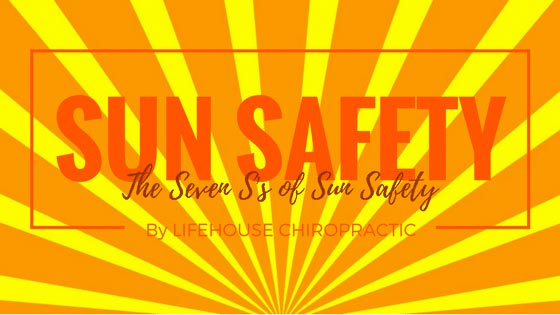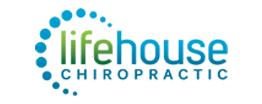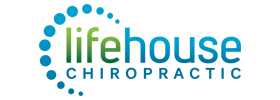Chiropractor London ON Provides the Seven S's of Sun Safety

It’s summer in London, ON, and this season is short, so you want to get outside as much as possible to enjoy the life-giving, brain-boosting, warm, radiant sun! The sun’s healing light is crucial to our physical and psychological well-being, but radiation from the sun can have seriously harmful effects on our health. In this article, outstanding London ON chiropractor tries to provide you with a comprehensive guide on how to balance sun exposure, so you get the benefit without the harm.
The Science Behind It and What It Means to You…
1. Seek the sun in moderation. You shouldn’t avoid the sun altogether, you just need to be smart about it!
A recent study, published in the Journal of Internal Medicine on March 16, 2016, found that people who avoided sun exposure had a decreased life expectancy, more decreased than the life expectancy of heavy smokers [1]. This study looked at almost 30,000 participants (females ages 25 to 64-year-old with no history of malignancy) over a span of 20 years.
Participants who avoided the sun had higher rates of cardiovascular disease, diabetes, multiple sclerosis, and pulmonary disease. And the results were dose-specific… meaning that the benefits of increased life expectancy with sun exposure went up directly in correlation to the amount of sun exposure.
It is recommended that you get 10-15 minutes of mid-day sun with 40% exposure on a daily basis. Stay out in the sun just long enough that your skin turns the very lightest shade of pink and never get sunburned.
Sun is vitalistic! Sun in London ON is the catalyst for Vitamin D production in our bodies. Vitamin D is a key player in a multitude of functions within the human body. That’s why, when there is a deficiency, it can compromise our health in numerous ways. Low vitamin D levels correlate to the following health issues:
- Decreased immune function – respiratory tract infections, allergies, hives, asthma
- Brain dysfunction – depression, autism
- Sleep disorders
- Diabetes and obesity
- Cardiovascular disease – hypertension, atherosclerosis
- Skin disorders – eczema, scleroderma, psoriasis, dermatitis
- Cavities
- Premature aging
Most North Americans tested are low in vitamin D. Since this vitamin is important to a healthy life, we need to make sure we are getting a sufficient daily dose of vitamin D. It is difficult to get enough vitamin D from food; therefore, we need to spend time in the sun and supplement.
Research shows that optimizing vitamin D levels can cut in half the risk for sixteen different types of cancers including, pancreatic, lung, ovarian, breast, prostate, and skin cancers [2].
2. Stay out of the sun once you’ve reached your daily sun exposure limit. LifeHouse Chiropractic recommends that you get 10-15 minutes of sun per day, then it is important to seek shade or make your own shade once you’ve reached your daily sun exposure limit [3]
3. Slip-on protective clothing. Wear protective clothing – lightweight, dark-colored clothes for the best protection. Dry clothes offer more protection than wet ones. Tightly woven fabrics block better than open weave fabrics, and polyester is better at blocking UV rays than natural fabrics [4][5]. Avoid "treated" sun protection clothes to avoid chemicals coming into direct contact with you or your child's skin for an extended period of time. Try a wet suit or rash guard when at the beach.
4. Slide on sunglasses. Eyes are sensitive to the negative effects of the sun. UV radiation from the sun can damage not only the skin of the eyelid but also the cornea, lens, and other parts of the eye. UV exposure may contribute to the development of certain types of cataracts, growths on the eye, and possibly macular degeneration. Slide on sunglasses that block 100% UVA and UVB rays. Fit the sunglasses so that they are close to the face and wrap around to provide full coverage.
5. Slap on a hat. Wear a hat that covers your or your child’s scalp, face, neck, tops of ears and shoulders. For every inch of brim worn, the lifetime risk of skin cancer is reduced by 10%; therefore, a 6” brim means a 60% risk reduction [7].
6. Slop on the RIGHT sunscreen. Once you have received your daily dose of vitamin D by spending about 10-15 minutes in the London ON sun, it’s time to either get into the shade, cover up or apply sunscreen. If you decide to apply sunscreen, make sure you choose the best one and apply it correctly.
We are directed to frequently apply a thick layer of sunscreen to our bodies and the bodies of our children. Since our skin is the body’s largest organ filled with pores, anything that goes on the skin can be absorbed into the body; therefore, LifeHouse Chiropractic thinks it is most healthful if the sunscreen we choose is not laden with chemicals that could be harmful to us.
Sunscreens often include ingredients that are “penetration enhancers” which help the sunscreen stick to the skin. These penetration enhancers are so good at what they do, many sunscreen chemicals are absorbed even more efficiently into the body and can be measured in blood, breast milk, and urine samples [8].
Spray-on sunscreens have become quite popular because they are so convenient. Unfortunately, when spraying on sunscreen, even if the ingredient list is all-natural, it can be unintentionally inhaled. Inhalation of any sunscreen can irritate and even damage the lining of the lung and trigger breathing problems [9]. It is best to avoid all spray-on sunscreens.
The effective ingredients in sunscreens tend to fall into two different categories – chemical and mineral filters.
- The most common sunscreens in London ON contain chemical filters. These sunscreens usually combine two to six of the following ingredients: oxybenzone, avobenzone, octisalate, octocrylene, homosalate and octinoxate.
The Environmental Working Group (EWG) is a non-profit, non-partisan organization dedicated to protecting human health and the environment with the goal of providing research and education that will empower people to live healthier lives. The EWG found that in laboratory studies, the most common chemical filter, oxybenzone, mimics estrogen which has the potential to cause endometriosis which poses a risk to fertility, is linked to early puberty in girls, and low sperm count and male infertility, and increases the risk for hormone-related cancers in both men and women [10].
Overview of the research shows that the use of sunscreens with chemical filters is increasing, malignant melanoma (what sunscreens are designed to prevent) is increasing, and many of the chemical filters are hormone disruptors.
These chemical sunscreens have been shown to affect the reproductive/developmental toxicity and disturbance of the hypothalamic-pituitary-thyroid axis in animals, and may, therefore, contribute to possible adverse effects on the developing organs of fetuses and children [11].
Chemical sunscreens are absorbed into the skin and attempt to neutralize the effects of the sun’s rays once they’ve penetrated the skin by chemically reacting to the UV radiation. This means that your cells (and your cell’s DNA) have already been exposed to the damaging UV radiation by the time the sunscreen chemicals begin to neutralize them. This is another reason why chemical sunscreens are not the sunscreen of choice.
- Alternatively, the active ingredient in some sunscreens is mineral-based. Mineral sunscreens use zinc oxide and/or titanium dioxide. These sunscreens sit on top of the skin and actually block the UV rays from penetrating the skin thereby reducing the negative effects of the sun on the skin cells.
When choosing a mineral-based sunscreen in London ON, you also need to be careful. A few products combine zinc oxide with chemical filters, so look for ones that are solely mineral-based. As well, some brands use nano-sized particles. That is the minerals are broken into smaller particles so they can go on the skin as a more invisible layer rather than a white layer of protection. The problem with this is that the particles are so small, they can enter the skin’s pores and blood system, and even cross the blood-brain barrier, so avoid nano-sized mineral sunscreens, too!
Finally, it is not good for mineral particles to be inhaled; therefore, choose a lotion over a spray.
- Aside from the filters, sunscreens also contain “inactive” ingredients which can make up to 70% of the product.
One such inactive ingredient, methylisothiazolinone, is listed on the labels of 94 sunscreens including six marketed to children. Methylisothiazolinone is used alone or in mixtures with a related chemical preservative called methylchloroisothiazolinone. In 2014, the American Contact Dermatitis Society named methylisothiazolone its “allergen of the year” [12].
Many sunscreens and lip balms contain the additive, retinyl pallitate, an antioxidant that fights skin aging. Several studies indicate that it may promote development of skin tumors in the presence of sunlight. Therefore, the EWG recommends you avoid sunscreens that contain vitamin A or retinyl palmitate, also known as retinyl acetate, retinyl linoleate and retinol [13]. Top chiropractor London ON has some recommendations.
I recommend that you avoid all chemical based sunscreens. Instead, I recommend that you chose a non-nano-sized, mineral based sunscreen lotion without a lot of additives, like those you can find here or any of the ones on this page.
7. Supplement/eat an “internal” sunblock. There is growing research that supports the fact that you can get protection from the sun from the inside out by supplementing or eating specific nutrients. Typically, it takes several weeks of daily nutrition or supplementation to saturate your body with enough to provide protection. Most of these nutrients not only help with protection from the negative effects from the sun, they have other health-giving benefits, as well.
- Eat plenty of antioxidant-rich fruits and vegetables, healthy fats, and unprocessed foods. Fresh, raw, unprocessed foods deliver the nutrients that your body needs to maintain a healthy balance of omega-6 and animal-based DHA omega-3 oils in your skin, which are your first lines of defense against sunburn.
- Astaxanthin, as a supplement, has been shown to work as an effective internal sunscreen in protecting your skin from UV radiation damage [14].
- Take curcumin to prevent melanoma [15]. Try this one.
- Use vitamin B3 to reduce risk of all other skin cancers [16].
- Optimize vitamin D3 levels to reduce cancer risk. It is best to get your serum levels checked, especially if you avoid the sun, and supplement as necessary.
- Because sun damage is actually an inflammatory reaction to the sun, it is good to avoid inflammatory foods, like sugar and processed foods.
In Summary…Remember the Seven S’s of Sun Safety
- SEEK the sun in moderation.
- STAY out of the sun once you have your daily sun exposure limit.
- SLIP on protective clothing.
- SLIDE on sunglasses.
- SLAP on a hat.
- SLOP on the RIGHT sunscreen.
- SUPPLEMENT with “internal sunscreens.”
Sources…
- https://www.ncbi.nlm.nih.gov/pubmed/26992108
- https://www.lifehousechiropractic.ca/shining-the-light-on-vitamin-d/
- https://www.sciencedaily.com/releases/2017/03/170308083938.htm
- https://www.livescience.com/35811-sun-protection-clothing-protects-against-uv-rays.html
- http://www.coolibar.com/custserv/custserv.jsp?pageName=upf-ratings
- https://nei.nih.gov/hvm/healthy_eyes_glasses
- http://www.coolibar.com/section/Sun-Hats/2222.uts
- http://www.ewg.org/sunscreen/report/the-trouble-with-sunscreen-chemicals/
- Spray on sunscreen problems
- http://www.webmd.com/women/endometriosis/news/20120511/sunscreen-ingredient-linked-endometriosis#1
- https://www.ncbi.nlm.nih.gov/pubmed/22612478
- http://www.ewg.org/sunscreen/report/the-trouble-with-sunscreen-chemicals/#.WXZDmYTyuUk
- http://www.ewg.org/sunscreen/report/the-problem-with-vitamin-a/
- https://www.cyanotech.com/pdfs/bioastin/InternalBeauty.pdf
- https://www.ncbi.nlm.nih.gov/pubmed/27280688
- http://www.nejm.org/doi/full/10.1056/NEJMoa1506197#t=article
- http://organicglow.com/products/reflect-outdoor-balm-zinc-sunscreen/https://www.amazon.ca/s/?ie=UTF8&keywords=ewg+sunscreen&tag=googcana-20&index=aps&hvadid=191526814515&hvpos=1t1&hvnetw=g&hvrand=14960561071641885066&hvpone=&hvptwo=&hvqmt=b&hvdev=c&hvdvcmdl=&hvlocint=&hvlocphy=9001070&hvtargid=kwd-298586663267&ref=pd_sl_4q34fhclmf_b
CONVENIENT
OFFICE HOURS
Give us a call and let's find out how we can make your time in our office as convenient for you as possible.
Monday
7:30am - 11:00am
3:00pm - 6:00pm
Tuesday
3:00pm - 6:00pm
Wednesday
7:30am - 11:00am
3:00pm - 6:00pm
Thursday
3:00pm - 6:00pm
Friday
7:30am - 11:00am
Saturday
Closed
LifeHouse Chiropractic
520 Springbank Drive #4
London, ON N6J 1G8
Phone (519) 204-9460
Fax (519) 601-9461




